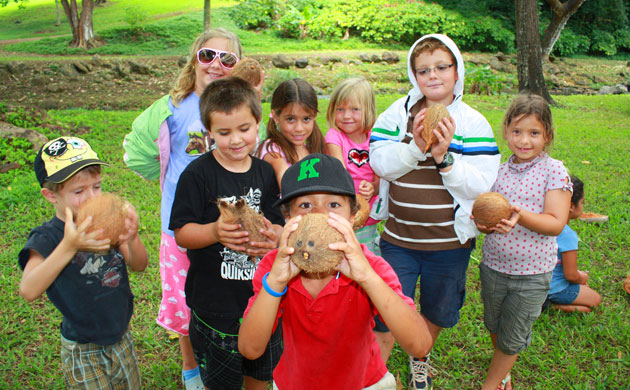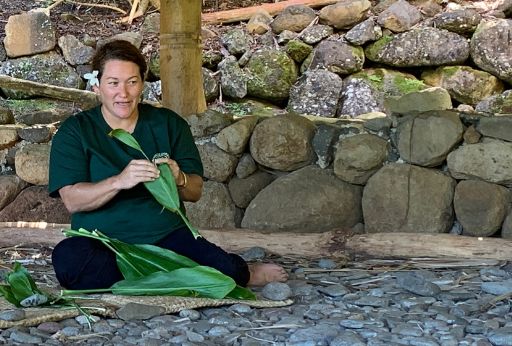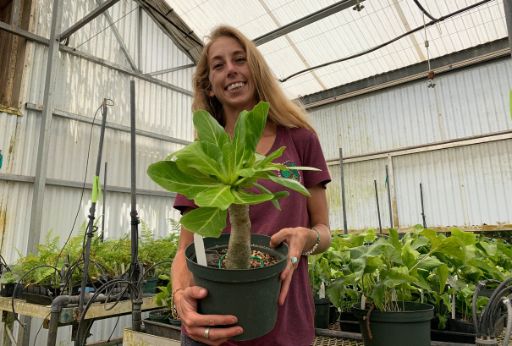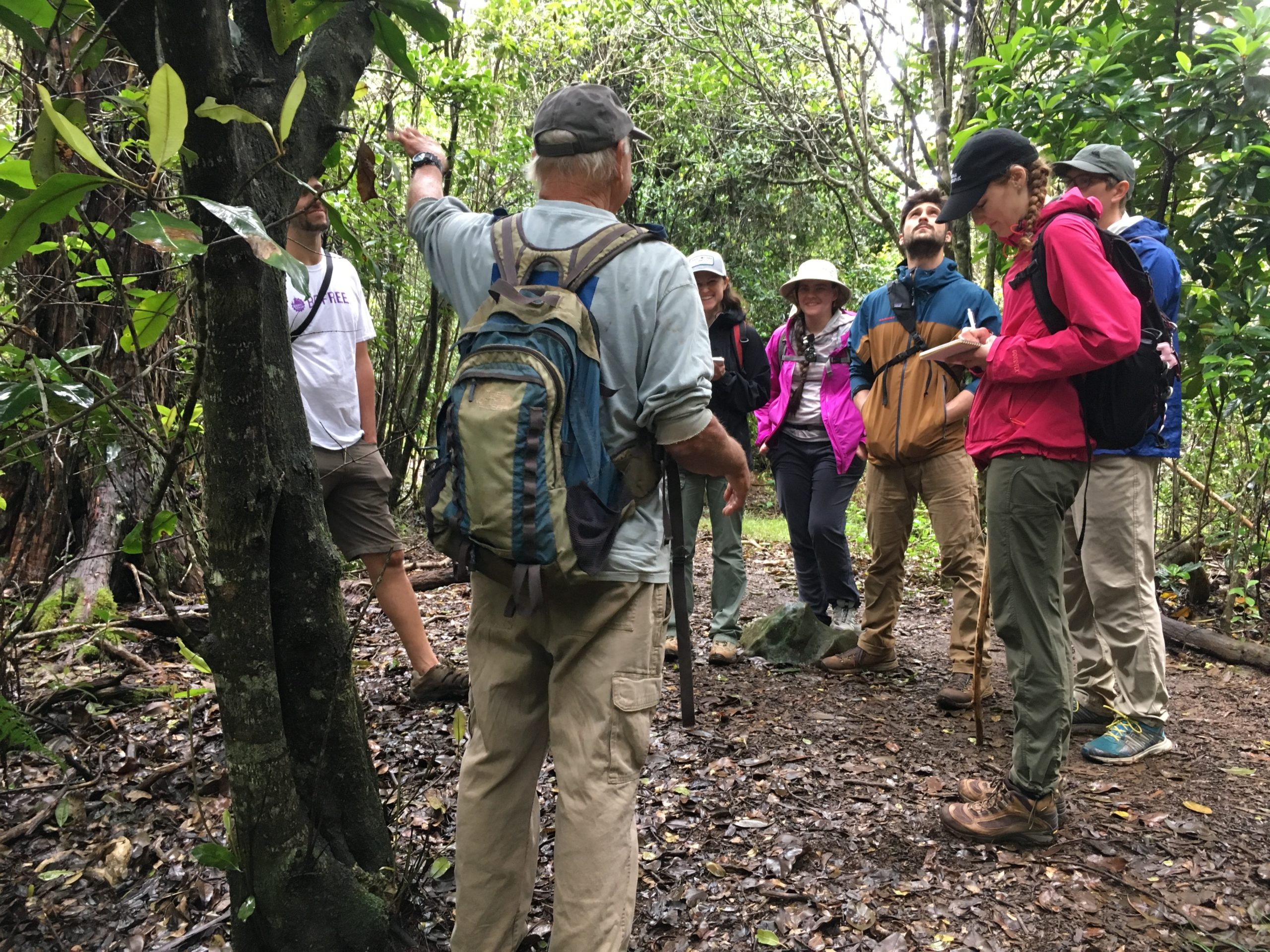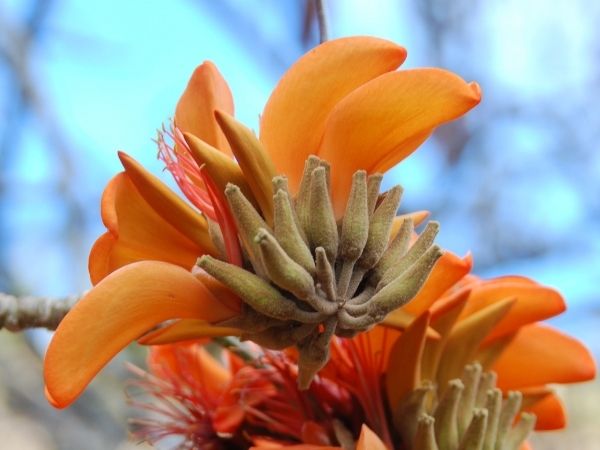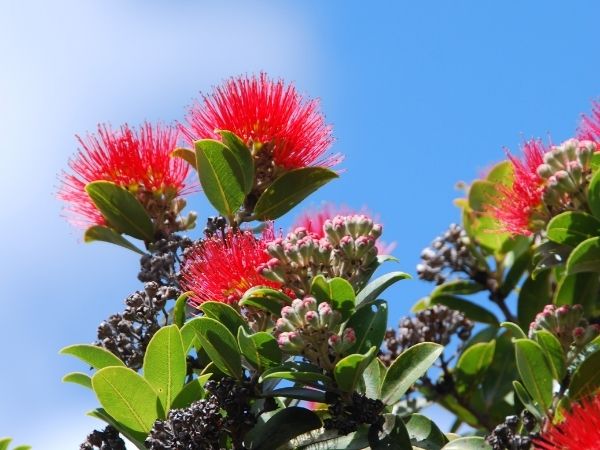Tropical Plant Database - Plant Details
Barringtonia asiatica
Click on any heading above to view more information about this plant
Conservation Status
- IUCN: least concern
- USFWS: None
Family: LECYTHIDACEAE
Genus: Barringtonia
Species: asiatica
Species Author: (L.) Kurz.
Vernacular: Fish Poison Tree
Synonyms: Barringtonia speciosa Forst.
Genus: Barringtonia
Species: asiatica
Species Author: (L.) Kurz.
Vernacular: Fish Poison Tree
Synonyms: Barringtonia speciosa Forst.
Barringtonia asiatica is a large tree (reaching up to 25m in height) that grows as a mangrove associate on sandy and rocky shores. The leaves are large and appear in rosettes at the end of branches. They are rounded and have very pronounced veins, growing up to 40 cm long and 15 cm wide. The young leaves have a bronze color with pinkish veins, while the old leaves turn green-yellow. The night-blooming flowers appear on a long spike from the center of the leaf group and are puffballs made of four white petals surrounded by a profusion of white filaments tipped with pink. The fruit is large, about 9 cm long, egg shaped or lantern-shaped, green at first than turning brown when ripe and floats on water. The fruit can survive on the sea for long distances and for periods of up to 2 years. The middle layer is spongy (like the coconut) and contains air sacs to help the fruit float. The innermost layer is hard and thick to protect the seed.
(Polunin, Ivan. 1987. Plants and Flowers of Singapore.)
(Polunin, Ivan. 1987. Plants and Flowers of Singapore.)
Seeds are used to get rid of intestinal worms and the heated leaves are used to treat stomachache and rheumatism.
(J. M. Watt and M. Breyer-Brandwijk. 1962. The Medicinal and Poisonous Plants of Southern and Eastern Africa.)
(J. M. Watt and M. Breyer-Brandwijk. 1962. The Medicinal and Poisonous Plants of Southern and Eastern Africa.)
Because all parts of the tree contain saponin, which is a poison, the seeds and other parts of the plant are pounded and used to stun fish in freshwater streams.
(J. M. Watt and M. Breyer-Brandwijk. 1962. The Medicinal and Poisonous Plants of Southern and Eastern Africa.)
(Polunin, Ivan. 1987. Plants and Flowers of Singapore.)
(Information for this species compiled and recorded by Camelia Cirnaru, NTBG Consultant.)
(J. M. Watt and M. Breyer-Brandwijk. 1962. The Medicinal and Poisonous Plants of Southern and Eastern Africa.)
(Polunin, Ivan. 1987. Plants and Flowers of Singapore.)
(Information for this species compiled and recorded by Camelia Cirnaru, NTBG Consultant.)
Barringtonia asiatica is a native of Asia and the Pacific islands.
The beautiful and fragrant flowers open at night and attract large moths (it is among the plants that host the impressive Atlas Moth) and nectar-feeding bats with their heavy scent. The next morning, the flower stamens are found dissipated beneath the tree crown.
(Polunin, Ivan. 1987. Plants and Flowers of Singapore.)
(Polunin, Ivan. 1987. Plants and Flowers of Singapore.)
- 023845 - collected by Michael Evans in 1966
- 085903 - collected by Art Whistler in 1970
- 085907 - collected by Art Whistler in 1972
- 085906 - collected by Art Whistler in 1973
- 085908 - collected by Art Whistler in 1975
- 085904 - collected by Art Whistler in 1980
- 085905 - collected by Art Whistler in 1980
- 066472 - collected by Art Whistler in 1985
- 085910 - collected by Art Whistler in 1990
- 085909 - collected by Art Whistler in 1992
- 022405 - collected by K. R. Wood in 1994
- 023748 - collected by Art Whistler in 1995
- 021693 - collected by Tim Flynn in 1996
- 033548 - collected by Michael J. Balick in 1997
- 064294 - collected by Melany H. Chapin in 1997
- 021973 - collected by Melany H. Chapin in 1997
- 034829 - collected by David H. Lorence in 2001
- 035860 - collected by G. T. Prance in 2001
- 038825 - collected by David H. Lorence in 2002
- 035862 - collected by G. T. Prance in 2002
- 093251 - collected by Michael J. Balick in 2002
- 087533 - collected by Michael J. Balick in 2002
- 048805 - collected by A. Dores in 2002
- 039830 - collected by Liloa Dunn in 2003
- 046130 - collected by A. Dores in 2003
- 066420 - collected by David E. Brussell in 2008
- 094604 - collected by Gregory M. Plunkett in 2019
- Unassigned - collected by Elliot Gardner in 2022
We currently have 28 herbarium specimens for Barringtonia asiatica in our collection. Click on any specimen below to view the herbarium sheet data.
.svg)







